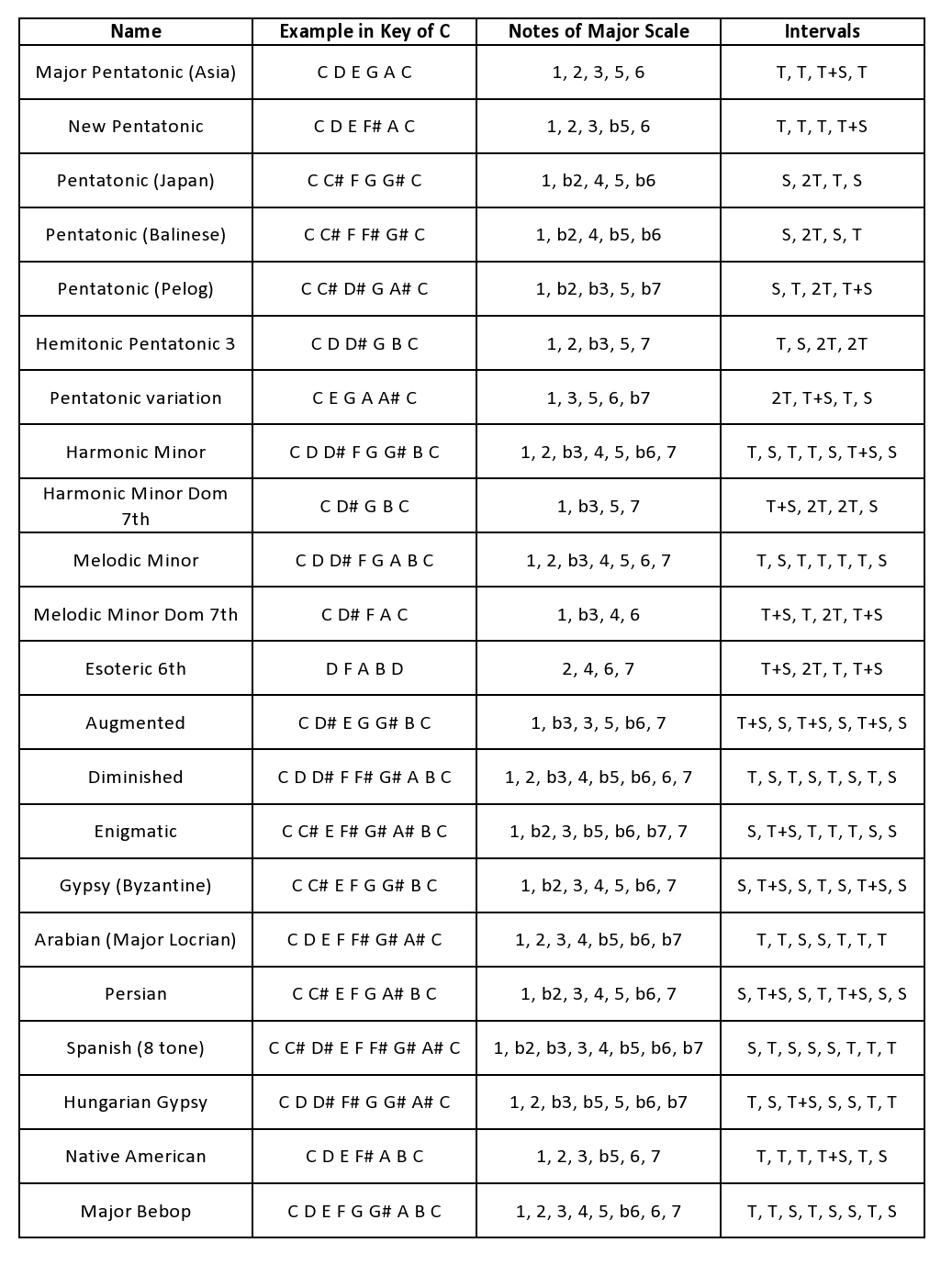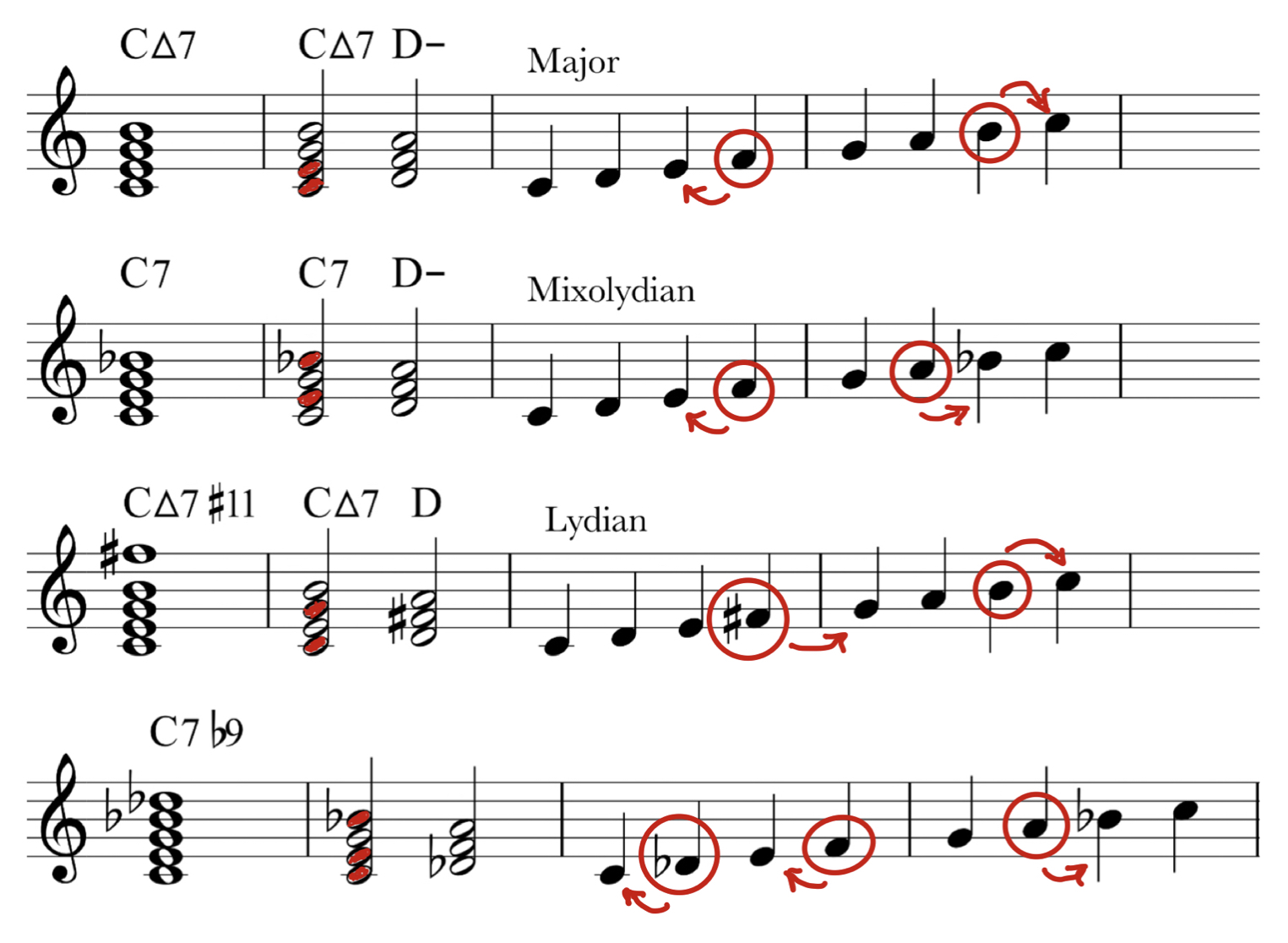

For example, if we choose A as tonic, then we can label the notes of the C diatonic scale using A = 1, B = 2, C = 3, D = 4, and so on. Note that such labeling requires the choice of a "first" note hence scale-degree labels are not intrinsic to the scale itself, but rather to its modes.

In the C diatonic scale, with C chosen as tonic, C is the first scale degree, D is the second scale degree, and so on. The term "scale degree" refers to these numerical labels. For example, the notes of the C diatonic scale (C, D, E, F, G, A, B) can be labeled, reflecting the choice of C as tonic. Relative to a choice of tonic, the notes of a scale are often labeled with numbers recording how many scale steps above the tonic they are. In many musical circumstances, a specific note of the scale will be chosen as the "tonic" – the central and most stable note of the scale. The Phrygian dominant scales (actually, a mode of the harmonic minor scale).The octatonic or diminished scales (eight notes)Ī large - indeed, virtually endless - variety of other scales exists, some of the more common being:.In the nineteenth and twentieth century, additional types of scales were explored: For example, major-mode pieces typically begin in a "tonic" diatonic scale and modulate to the "dominant" scale a fifth above. Modulation occurs in relatively conventionalized ways.

The music of this period introduces modulation, which involves systematic changes from one scale to another. These scales are used in all of their transpositions. The melodic and harmonic minor scales (seven notes).Music of the common practice periods (1600–1900) uses three types of scale: Accidentals are rare, and somewhat unsystematically used, often to avoid the tritone. Western music in the Medieval and Renaissance periods (1100–1600) tends to use the white-note diatonic scale C-D-E-F-G-A-B. The harmonic minor scale includes a three-semitone step the pentatonic includes two of these. Notes in the commonly used scales (see just below) are separated by whole and half step intervals of tones and semitones. Scales in traditional Western music generally consist of seven notes and repeat at the octave. All three are used in the opening pages of Debussy's piece. Below, the first scale is a whole tone scale, while the second and third scales are diatonic scales. One or more scales may be used in a composition, such as in Claude Debussy's L'Isle Joyeuse. Explicit instruction in scales has been part of compositional training for many centuries. They are also often used precompositionally to guide or limit a composition. Scales can be abstracted from performance or composition. used in jazz and modern classical music: octatonic or eight.used in prehistoric music: ditonic or two, tritonic or three, tetratonic or four.very common: pentatonic, hexatonic, heptatonic scales, having five, six, and seven tones respectively.Or by the number of different pitch classes they contain: for example: diatonic, chromatic, whole tone.Scales may be described according to the intervals they contain: For example a C major scale can be started at C4 (middle C see scientific pitch notation) and ascending an octave to C5 or it could be started at C6, ascending an octave to C7. This single scale can be manifested at many different pitch levels. For instance, the increasing C major scale is C-D-E-F-G-A-B-, with the bracket indicating that the last note is an octave higher than the first note, and the decreasing C major scale is C-B-A-G-F-E-D-, with the bracket indicating an octave lower than the first note in the scale. An octave-repeating scale can be represented as a circular arrangement of pitch classes, ordered by increasing (or decreasing) pitch class. Most scales are octave-repeating, meaning their pattern of notes is the same in every octave. Scales are typically listed from low to high.


 0 kommentar(er)
0 kommentar(er)
